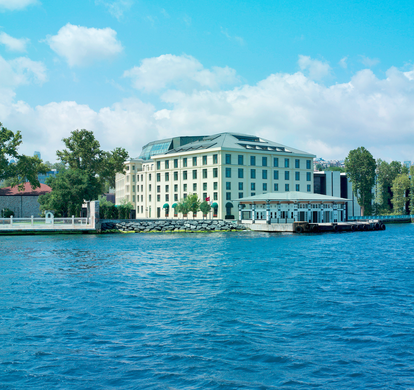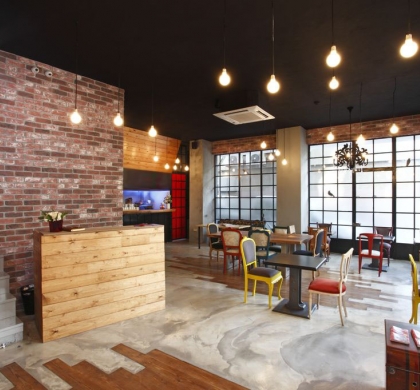Buy or gift a stand-alone digital subscription and get unlimited access to dozens of back issues for just £18.99 / $18.99 a year.
Please register at www.exacteditions.com/digital/cornucopia with your subscriber account number or contact subscriptions@cornucopia.net
Buy a digital subscription Go to the Digital EditionThe approach to Üsküdar across the Bosphorus is defined by Sinan’s two waterfront mosques, which have framed this gateway to Asia for four centuries. Photographs by Brian McKee
Two very different female icons have immortalised the town of Üsküdar in the Western imagination. Florence Nightingale set up her hospital in Scutari, as Üsküdar was then known, during the Crimean War, using pioneering methods to treat rank-and-file soldiers. And in the 1950s Eartha Kitt gave an unforgettable smoky rendering in quite good Turkish of a popular Turkish song, ‘Kâtibim’, the first line of which is “Üsküdar’a gider iken” or “As I was going to Üsküdar”. Definitely catch it on YouTube before you go yourself. (Or try Zeki Müren’s rendition.)
A landing spot for commuters going to and from Europe, and a working-class neighbourhood, Üsküdar is a busy, traffic-clogged market town where you can buy everything from an Empire chandelier to a plastic button, all overlooked by some of the finest examples of Ottoman religious architecture – mosques that happen to have been commissioned by women. The one thing you might be hard pressed to find is a drink – this is a conservative neighbourhood.
Üsküdar is also now an underground stop for the Marmaray metro, which brings a tube nearly a mile long under the Bosphorus from stations at Yenikapı and Sirkeci on the European side. Indeed anyone trying to get from the Anatolian side to Atatürk Airport in rush hour could do worse than take the metro to Kazlıçeşme, a 10-minute ride away.
The metro saves time, but it will always be more pleasurable to take the scenic route and to arrive on the Asian side by ferry (from Beşiktaş Kabataş, Karaköy or Eminönü). A short hop, it’s a trip one never wearies of. At the iskele, gypsy women sell flowers from colourful stands, while men shine shoes. Buses and dolmuşes run in all directions, south to Kadıköy and north all the way up to Beykoz at the top of the Bosphorus. Rising up behind the buses is Sinan’s İskele Camii (Jetty Mosque, properly known as the Mihrimah Sultan Mosque), and to the right gleam the pale stones of his tiny Şemsi Ahmed Pasha Mosque, where the water laps at the foundations.
Üsküdar – its history shaped by three powerful queen mothers and a tireless English nurse – has surprises to offer behind its unprepossessing façade: dazzling mosques, villagey tranquillity and epic views…
Lovely churches, a lively market, enticing ice cream, shady cafés… and they called this the land of the blind. Andrew Finkel introduces Kadıköy, and Harriet Rix mooches around the district of Moda. Photographs by Monica Fritz
Maureen Freely goes ‘Bosphorising’ with her father, John Freely, in search of her treasured childhood in Istanbul. Could it be that it was all so simple then?
Turn your back on the Old City and make for the water. Andrew Finkel takes a drive along the Bosphorus’s lower shore: from the half-abandoned docks of Karaköy, past mammoth cruise ships and hangars for modern art, to the palaces of Beşiktaş and Ortaköy
Andrew Finkel extols the charms of a trip up the western, European, shore of the Bosphorus, whether by water or by road
Over 56 pages, we cross the Bosphorus to explore the lower reaches of the Asian shore. Sailing past the ruins of stately Haydarpaşa Station, we land at the busy Kadıköy docks, wander round Moda’s old cosmopolitan backwaters and head upstream to the sparkling hilltop mosques of Üsküdar
Continuing our tour of Bosphorus villages, we cross back to a more untamed Asian shore. Heading upstream again, we start in Beylerbeyi and Çengelköy, with their grand views of the Old City, and make for the fortress of Anadoluhisari, where the Bosphorus narrows and the yalis are at their most captivating. Our journey ends on the hilltop of Anadolukavağı, with the Black Sea in our sights
The potato was a latecomer to Turkish cookery, but today it is hard to imagine life without it. The humble spud, the ultimate in comfort food, is endlessly versatile,and also comes packed with goodness. Berrin Torolsan serves up some favourite dishes



Cornucopia works in partnership with the digital publishing platform Exact Editions to offer individual and institutional subscribers unlimited access to a searchable archive of fascinating back issues and every newly published issue. The digital edition of Cornucopia is available cross-platform on web, iOS and Android and offers a comprehensive search function, allowing the title’s cultural content to be delved into at the touch of a button.
Digital Subscription: £18.99 / $18.99 (1 year)
Subscribe now